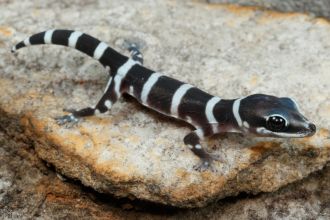
During the past decade a team of Australian researchers has undertaken a combination of surveys, genetic diversity assessments, and studies across the Northern Territory’s Top End. They have resulted in the discovery of a growing number of previously unrecognised vertebrate species endemic to Australia’s Monsoonal Tropics.
Researcher Graeme Gillespie, from the NT’s Department of Environment and Natural resources and co-author of the paper published recently in online journal Zootaxa, said the discoveries highlighted the biological significance of northern Australia’s islands. Not only have they provided ‘critically important refuges’ for many threatened species like the northern hopping mouse, and brush-tailed rabbit rat – both in decline on the mainland – but species unique to the region’s islands have also been revealed as a result of the studies.
“We’re now also discovering many of them have their own endemic species that are found nowhere else, and that have been completely overlooked until now,” Gillespie, who led the work on Groote Eylandt, the third largest offshore island in the Gulf of Carpentaria, where a large and colourful gecko, (Oedura nesos) has now been described by researchers as, ‘a large, colourful species with white bands and yellow spots, that lives in rock crevices’, said.
Co-author and lead researcher Paul Oliver, a lecturer at Griffith University’s School of Environmental Sciences – Ecology and Evolution, and who was part of the team that described a similar velvet gecko species in 2016, said the babies of the new species were even more striking than the parents, being black with bright white bands.
“We had some clues it might not be the same as the Oedura bella, or gulf marbled velvet gecko that we described in 2016, and fortunately we were able to work with researchers from the NT government, and traditional owners and rangers from the Anindilyakwa Land Council to get material for genetic analyses, and pictures of the animal in life,” Oliver said.
Co-author Chris Jolly, a PhD candidate at the University of Melbourne’s School of BioSciences, Ecology and Evolution Laboratory, said nine new species were described last year, which was exciting but also important for gaining a greater understanding of the region’s biodiversity.
“I’m currently writing a field guide to the reptiles of the Northern Territory, and the list of species I have to include is growing rapidly. I’m struggling to keep up!” he said.
While further survey work will be necessary to confirm the gecko is an, ‘insular endemic’ species to Groote Eylandt, the research team acknowledged the support of Groote’s traditional owners and the land council for supporting their ongoing work.
Anne Layton-Bennett

